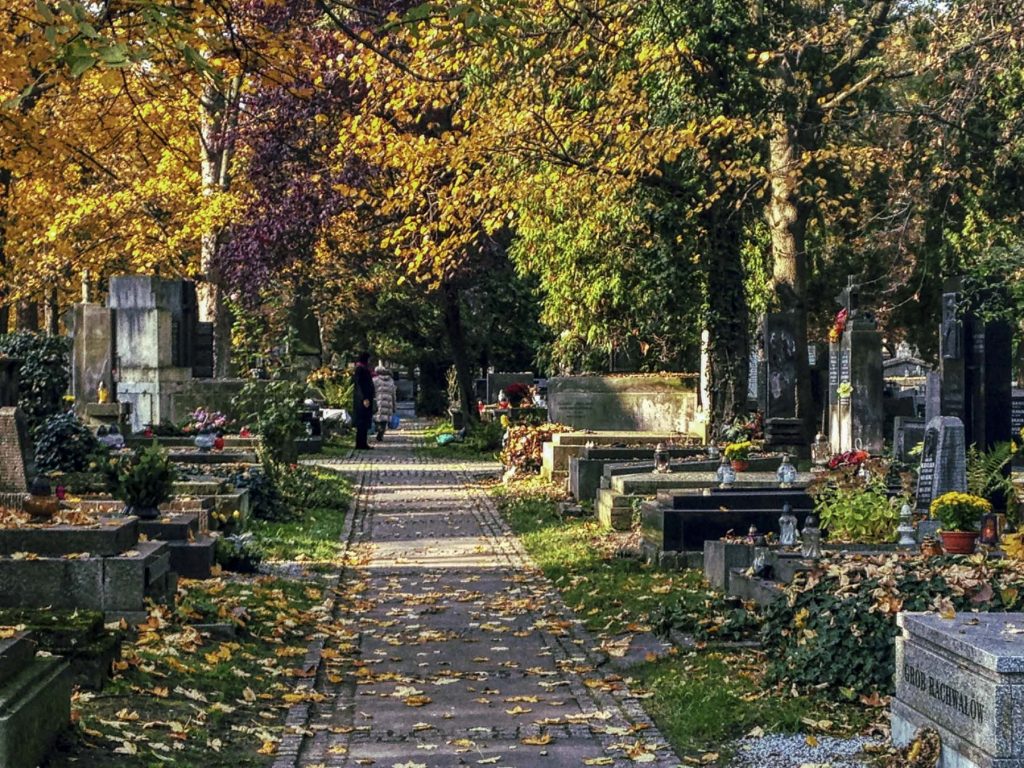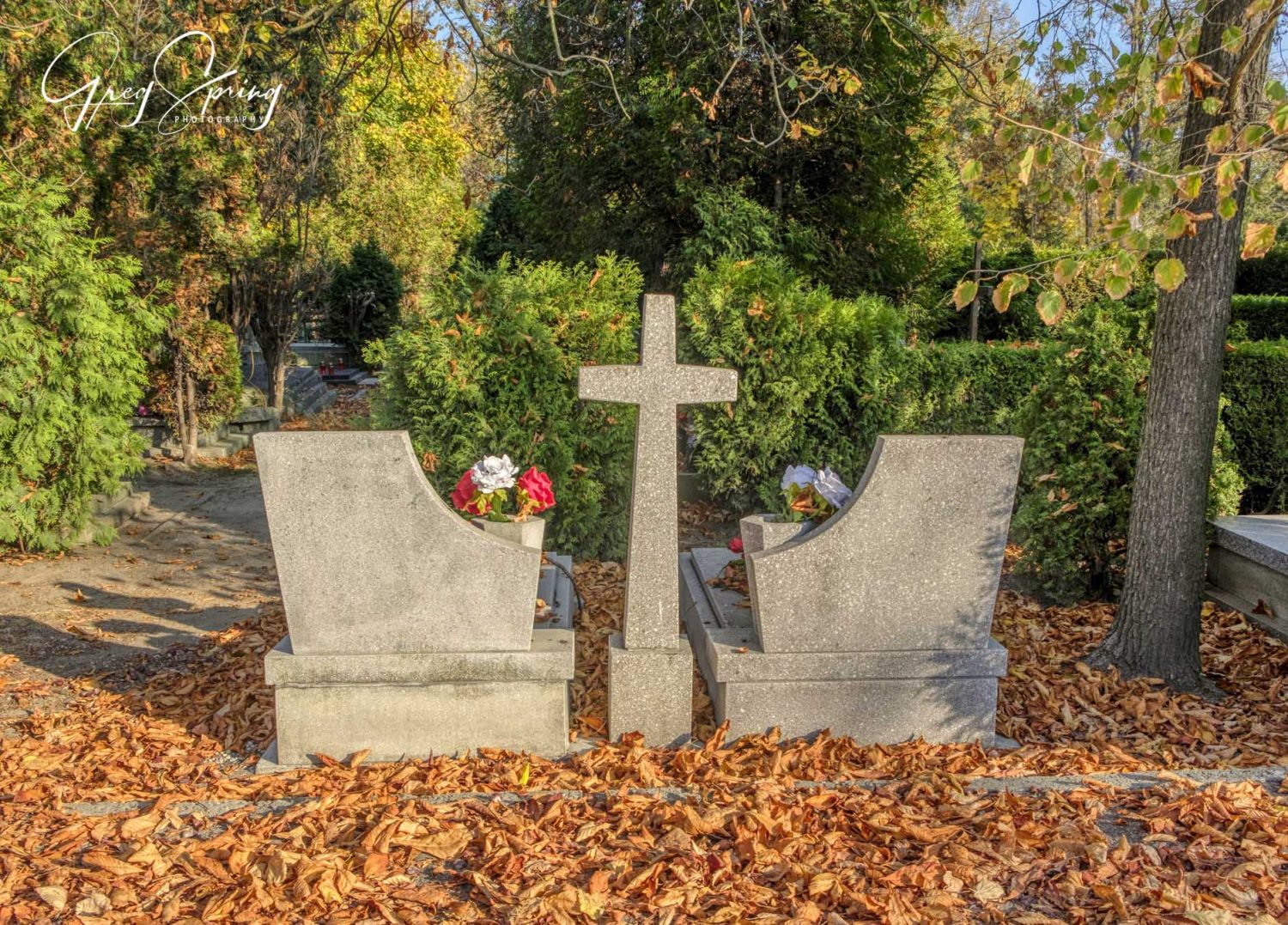At the end of the golden month of October is spooky Halloween, a fun celebration for Americans. Here in Poland, this uniquely American over-the-top holiday is slowly emerging as a retail money-maker. This year, I spotted jack-o-lantern cookies, ghost cookies, carved pumpkins and ceramic jack-o-lantern shells made for candle-lighting. For a Polish girl, who learned about Halloween by living in the U.S., Halloween in Poland is an enigmatic head-scratcher because for Poles, it has always been November 1, the Day of the Dead, that is the national holiday, a solemn observance and maybe a little spook-fest.
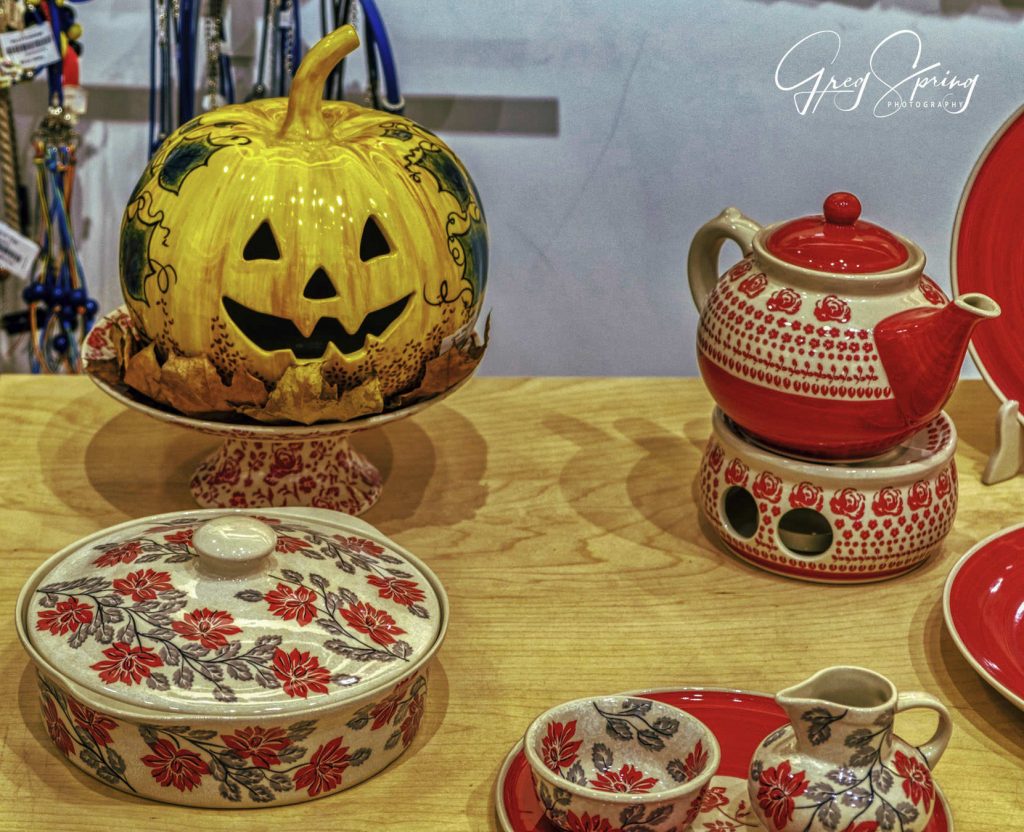
A Jack o Lantern from the famous Polish ceramic factory, Bolesławiec
Celebrated in Poland and most of Europe, November 1, All Saints Day, and November 2, All Soul’s Day, are on the Christian calendar and are solemn, respectful commemorations of departed souls. November 1 is a public holiday in Poland. All businesses and schools are closed. People actually gather in cemeteries all day and all night. The following day, November 2, is All Soul’s Day called Zaduszki in Poland. This translates as prayers for the souls of the dead. I asked my Polish friends what people might do on November 2 when the candles, prayers, and observance are on November 1. She answered that they continue to visit cemeteries because not all family and friends are buried in one cemetery. No wonder they say the Slavic nature can be morose.
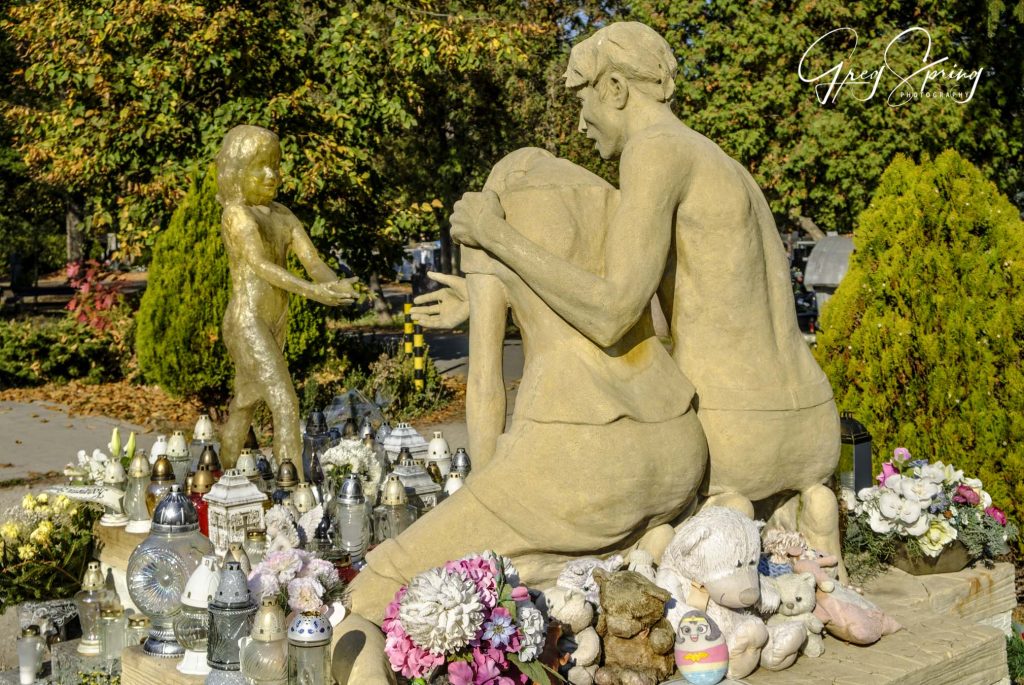
A gravesite of a child with an evocative memorial. Osobowice Cemetery, Wrocław
In old times in Poland and other Slavic countries, on the days of Zaduszki, the spirits of deceased relatives were believed to visit their old homes and haunts. It is said, they gather near the windows and doorways. So, the doors and windows of the house were left open. A special bench was placed at the hearth for the soul’s use. Women would bake bread for the dead souls and the remains of a special dinner were left on the table until morning for the spirit’s feast. The living are not allowed to watch the dead, so everyone goes to bed early. The family dogs are chained that night I guess because dogs can get edgy around spirits. When going out to do chores in the evening, like taking out the trash, for example, a person would go out shouting loudly, something like: hey spirit, get out of my way or you may get trash dumped on you. You can see how the traditions of Halloween evolve from some of these activities. Give those dead souls a treat, open the door and let them in as you don’t want angry spirits playing tricks on you.

Osobowice Cemetery, Wrocław
Today, in modern Poland, in the weeks and days before November 1, families travel to the cemeteries in which their relatives are buried. During the whole month of October, a frenetic cleaning, sprucing and decorating can be observed at Polish cemeteries. The plots are left covered with flowers and flickering lantern candles. Sometimes families will make several trips all over the country to reach the different cemeteries of their families.
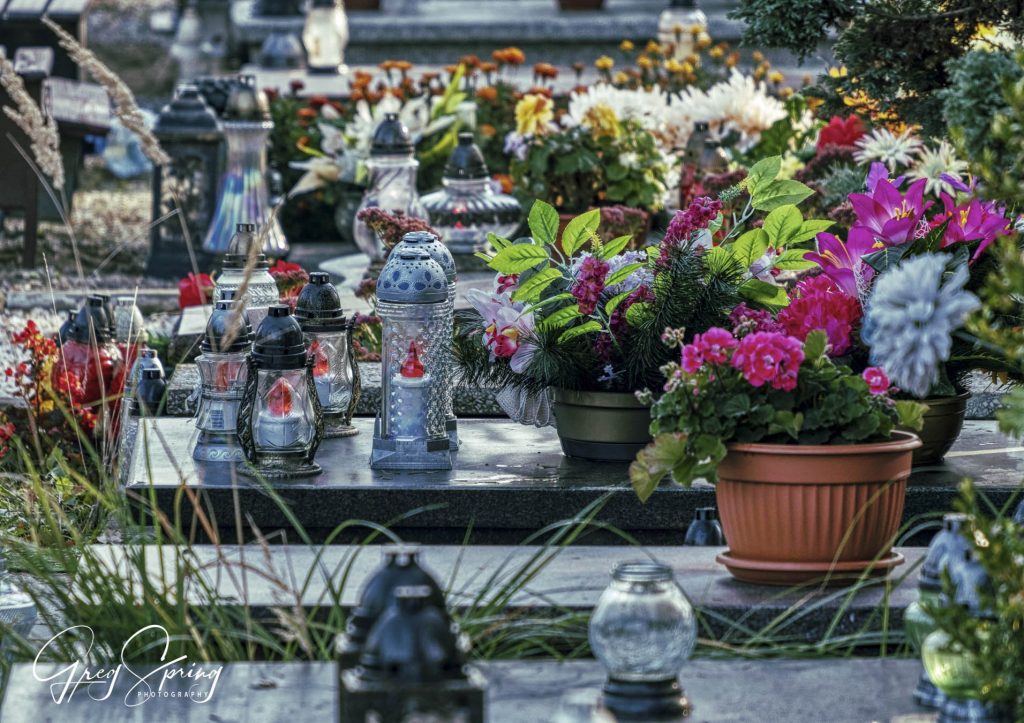
Osobowice Cemetery, Wrocław
Recently, my aunt Wanda showed me some old photos taken in October of a family group having a picnic on the hood of a car. Dressed in cool weather clothes on a country road with a forest as a backdrop, they were road-tripping over Poland hitting all the family cemeteries. They stopped and ate at the side of the road where they spread a special kind of picnic. This is a fond memory for Aunt Wanda connecting this holiday with family living and dead, brought together in remembrance and camaraderie.
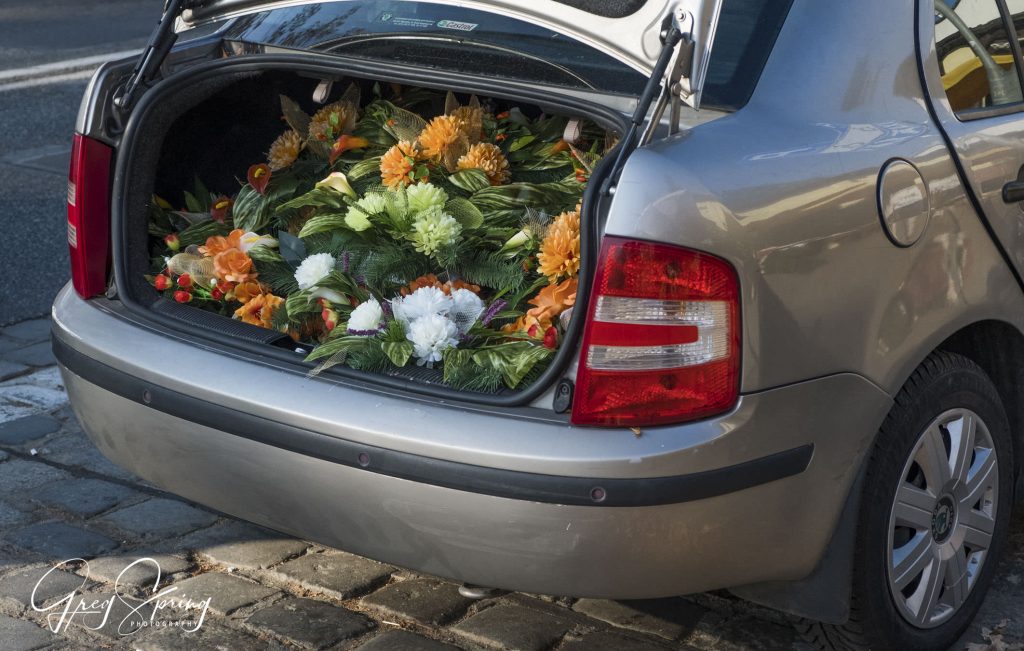
As Americans wind through retail aisles crammed with jack-o-lanterns, black cats, witches, spiders, and orange candy, the retail aisles here in Poland are crammed with lanterns for the gravesite. Called znicze, these lanterns with a properly sized candle inside, are constructed for popping on top of a grave. Coming in every size, shape, and color, they are a lucrative business sold on the scale of Halloween novelties. Flowers, both real and artificial, hold a close second in retail sales. A znicze flame expresses that a departed loved one will be remembered for as long as there is a light in the world.
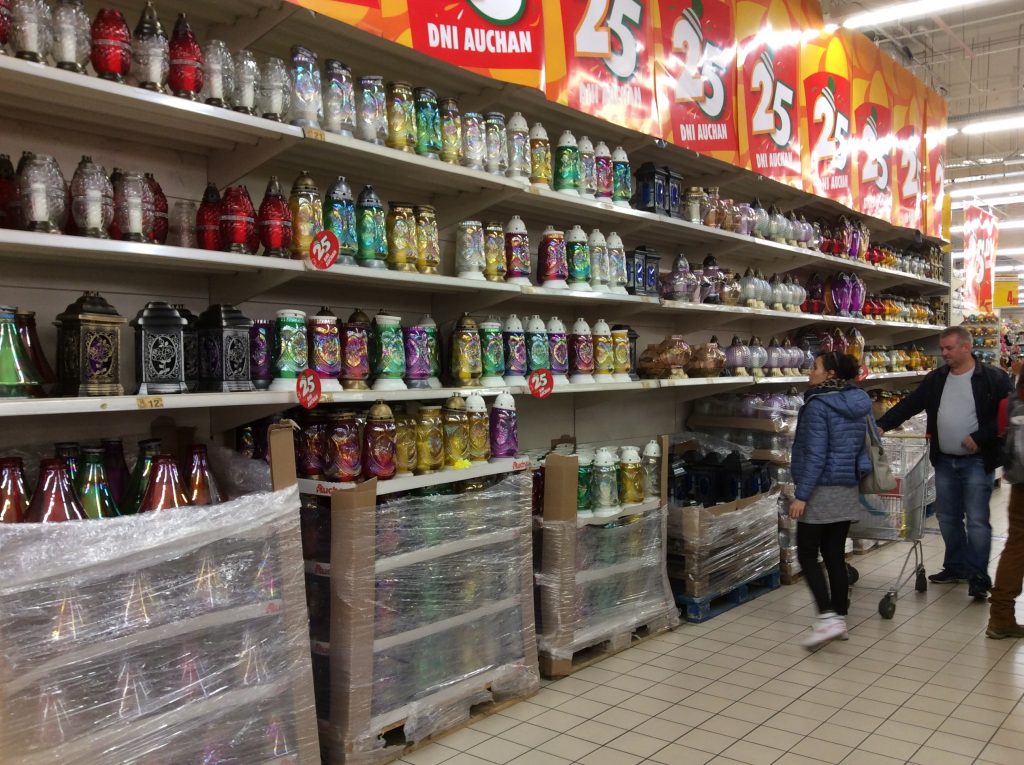

Photo from Pinterest, Rakowicka Cemetery, Kraków
The actual night of November 1 is a grandstand of an event. Thousands and thousands of candles are lit in all the cemeteries of Poland resulting in a grandiose expression of fantastic illumination. It is told that the prolific amount of flickering light over the country can be observed from the space station. People gather in the cemeteries and stay for hours. A priest walks through the cemetery and blesses the graves with holy water. He sings special cemetery songs and wanders the paths amid clouds of  incense. Family, smoke, light and color and, sometimes a little culinary treat — the spirits are honored and pleased.
incense. Family, smoke, light and color and, sometimes a little culinary treat — the spirits are honored and pleased.
Before and after the celebration, the trash mushrooms in the dumpsters placed about the cemetery perimeters. Additionally, port-a-potties have to be brought in and set out for the crowds that haunt the graveyards on that night. And during the final weeks of October and into November, the amount of traffic accidents increases reciprocally. The dead are rock stars with a monumental fan base and with the sodden leftovers to justify that preeminence.
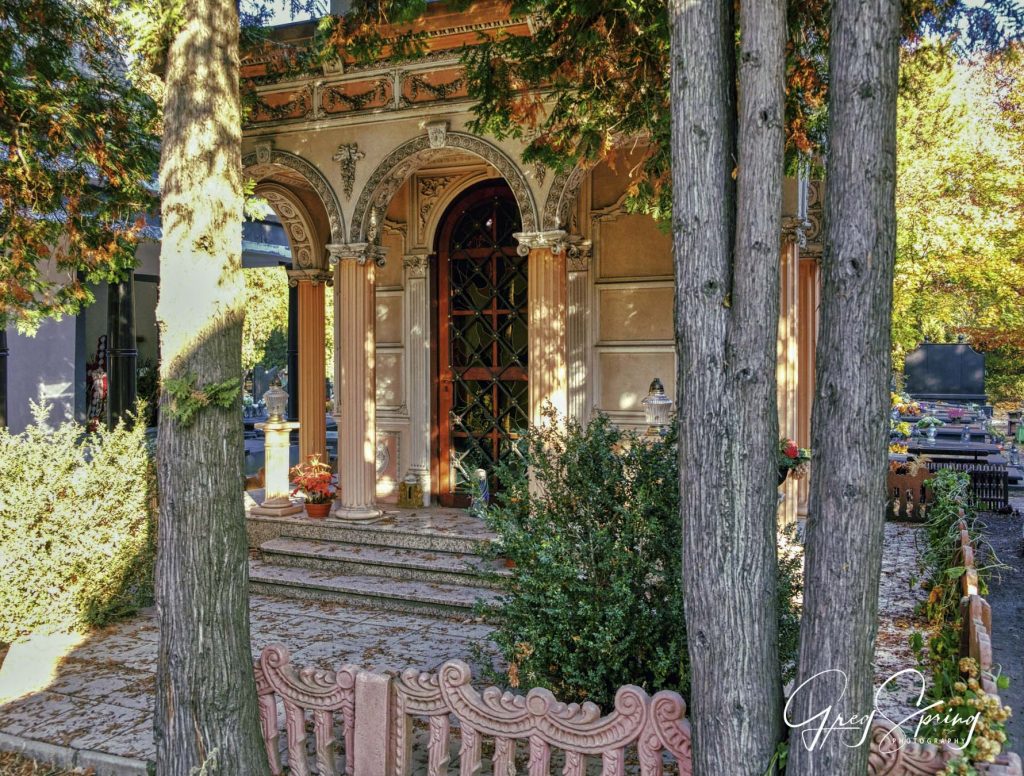
One of the Roma masoleums at Osobowice cemetery. The Roma like to party at the gravesite.
Mexico has its colorful and evocative Day of the Dead which is also derived from European roots. In Poland, the dead are honored in the cemeteries through tributes of flowers, lanterns and general fall cleaning. There is a common element combining the ancient pagan customs with the nouveau Christian liturgies.So, what about October 31? Does it have any significance in Poland? October 31st is called Dziady, a pre-Christian ritual of a night of meetings with the dead. In far-gone days, candles were lit to guide souls to their earthly homes so they could spend that one night out of the year with their loved ones. The custom of lights and candles on Halloween come from these pagan roots. A grave without a candle is a grave forgotten, a soul left without help and guidance. For Halloween, All Saint’s Day, and All Soul’s Day, a triumvirate of the spooky, the dead, the candles, and the stories coincide reminding us that we are but dust, our ancestors live, and remembrance might bring peace.
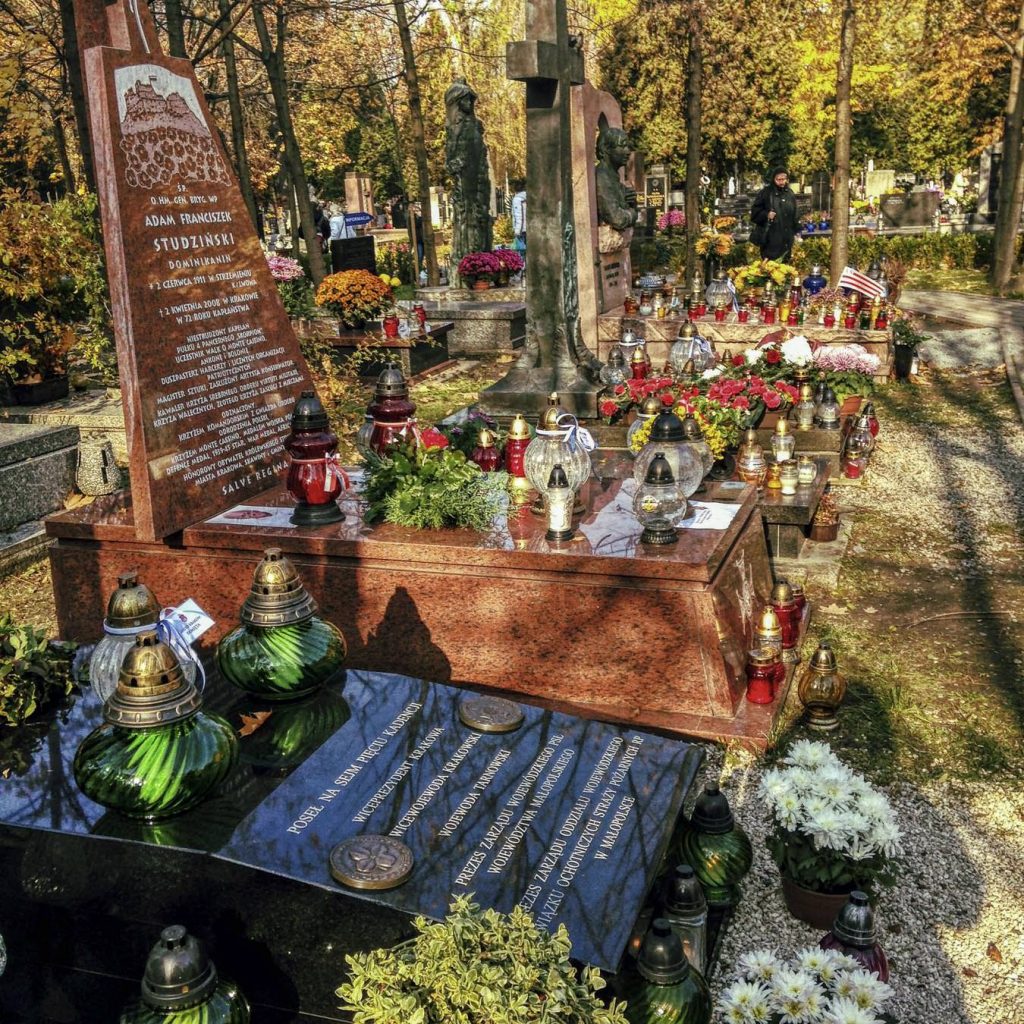
Rakowicka Cemetery, Kraków
“Why Poland?” is a blog written and produced by Grace Nagiecka with photos by Gregory Spring from Kraków, Poland 2018.
We invite you to visit our other blog pages, “Wanderlusting Dreams” https://www.wanderlustingdreams.com and “Greg Spring Photography” https://www.gregoryspring.com. Thank you for supporting us by reading and enjoying our work.
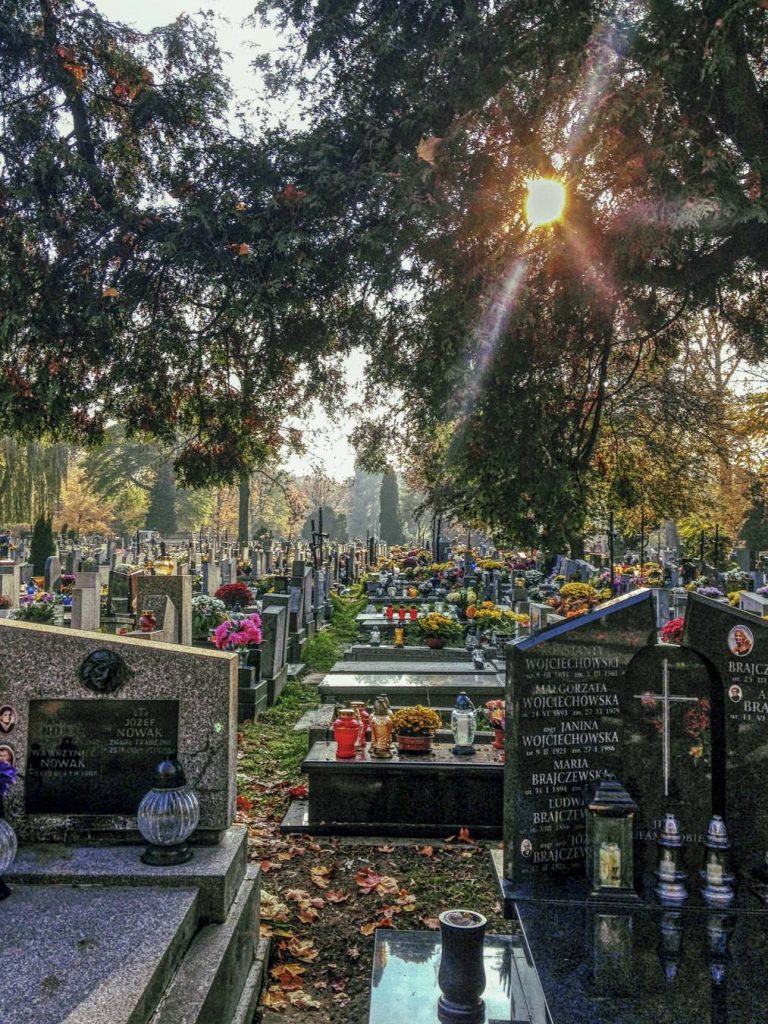
Rakowicka Cemetery, Kraków
